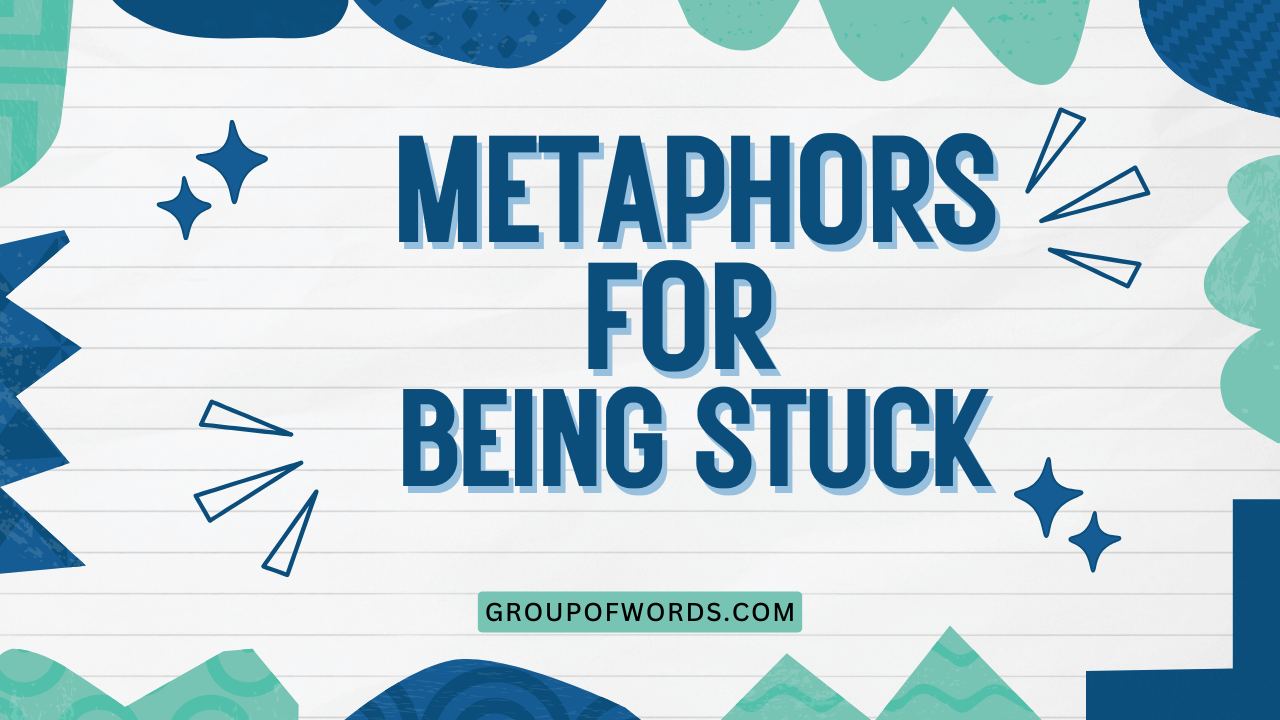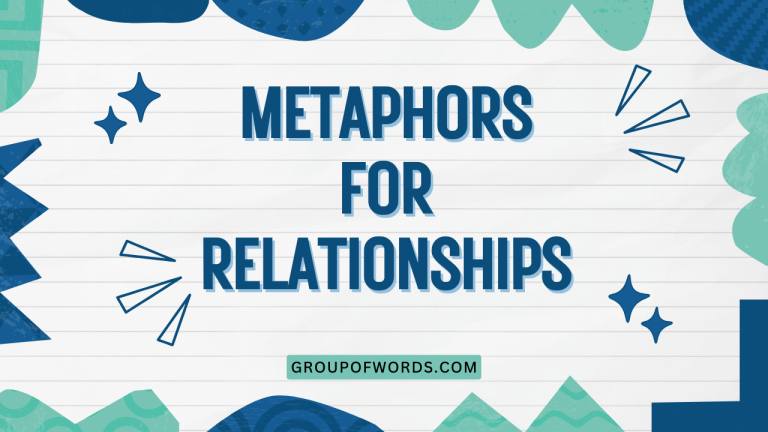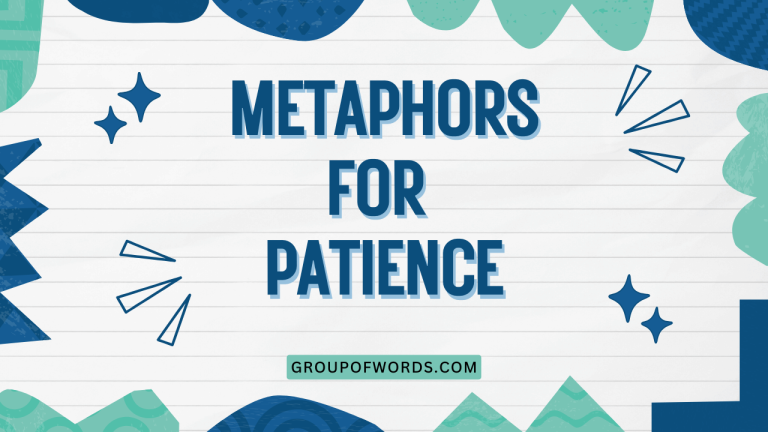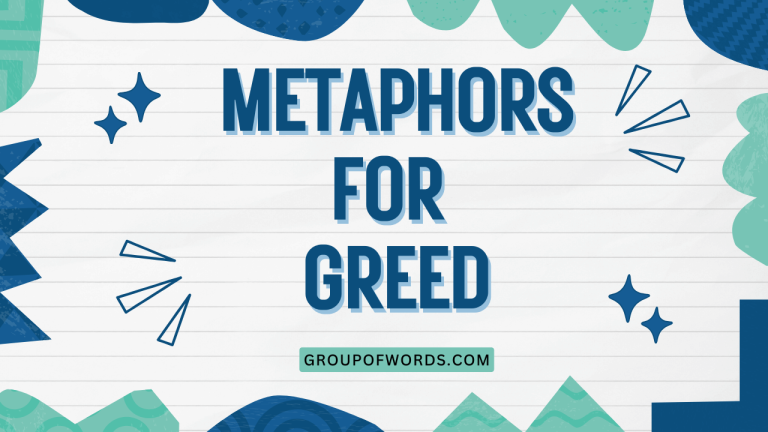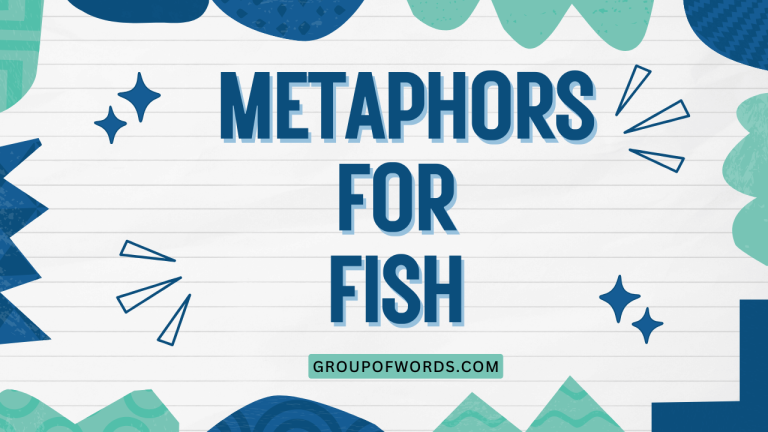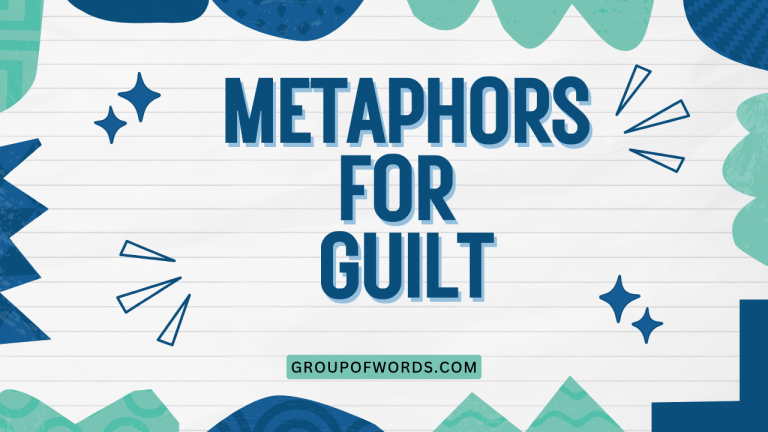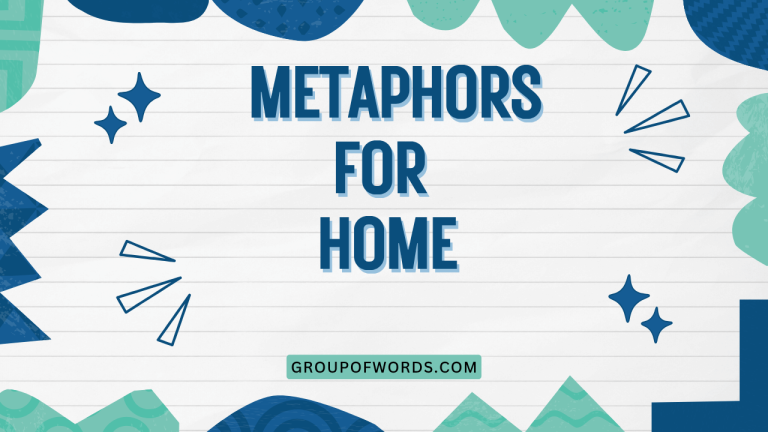Metaphors for Being Stuck: A Comprehensive Guide
Understanding metaphors is crucial for mastering English, as they add depth and color to our language. Metaphors for “being stuck” are particularly useful because they help us express complex feelings of frustration, stagnation, and difficulty.
This article provides a comprehensive exploration of these metaphors, covering their definitions, structural elements, usage rules, and common mistakes. Whether you’re an ESL student, a writer looking to enhance your descriptive skills, or simply someone interested in the nuances of the English language, this guide will equip you with the knowledge and tools to effectively use metaphors for being stuck.
Table of Contents
- Definition of Metaphors for Being Stuck
- Structural Breakdown of Metaphors
- Types and Categories of Metaphors for Being Stuck
- Examples of Metaphors for Being Stuck
- Usage Rules for Metaphors
- Common Mistakes When Using Metaphors
- Practice Exercises
- Advanced Topics in Metaphorical Language
- Frequently Asked Questions
- Conclusion
Definition of Metaphors for Being Stuck
A metaphor is a figure of speech that directly compares two unrelated things, implying a similarity between them. Unlike similes, which use “like” or “as” to make comparisons, metaphors state that one thing *is* another.
Metaphors for “being stuck” are used to describe situations where someone feels trapped, unable to progress, or hindered in some way. These metaphors tap into our understanding of physical immobility and apply it to emotional, professional, or personal circumstances.
The function of these metaphors is to evoke a strong emotional response and create a vivid image in the reader’s or listener’s mind. They allow us to express feelings of frustration, helplessness, and stagnation in a more impactful and relatable way.
By using metaphors, we can communicate the intensity of our experience of being stuck and connect with others who have felt similarly.
The context in which these metaphors are used is broad, ranging from personal struggles and professional roadblocks to creative blocks and relationship difficulties. They are common in literature, poetry, everyday conversation, and business communication.
Understanding the nuances of these metaphors can significantly enhance your ability to communicate effectively and empathetically.
Structural Breakdown of Metaphors
A metaphor consists of two main elements: the tenor and the vehicle. The tenor is the subject being described, and the vehicle is the object or concept used to describe the tenor. In metaphors for being stuck, the tenor is the feeling or situation of being trapped or unable to move forward, and the vehicle is a physical or conceptual image that represents this state.
For example, in the metaphor “I’m in a rut,” the tenor is the feeling of being stuck in a repetitive and unfulfilling routine, and the vehicle is the image of a rut, a deep track in the ground that is difficult to escape. The effectiveness of a metaphor depends on the relationship between the tenor and the vehicle.
A strong metaphor will create a clear and resonant connection between the two, allowing the listener or reader to easily grasp the intended meaning.
The underlying structure of a metaphor often involves a process called conceptual blending, where two different concepts are combined to create a new, emergent meaning. This blending process allows us to transfer our understanding of one concept (the vehicle) to another (the tenor), creating a richer and more nuanced understanding of the original subject. Recognizing this structure can help you both understand and create more effective metaphors.
Types and Categories of Metaphors for Being Stuck
Metaphors for being stuck can be categorized in several ways, depending on the type of imagery used. Here are some common categories:
Physical Obstruction Metaphors
These metaphors involve physical barriers or hindrances. They often use imagery of being trapped in a confined space or blocked by an obstacle.
Immobilization Metaphors
These metaphors focus on the inability to move or take action. They might involve imagery of being frozen, paralyzed, or weighed down.
Entrapment Metaphors
These metaphors emphasize the feeling of being caught or ensnared. They often use imagery of being trapped in a net, a cage, or a sticky substance.
Directional Metaphors
These metaphors involve a deviation from a desired path or a loss of direction. They might use imagery of being lost in a maze, stuck in a dead end, or going in circles.
Process-Related Metaphors
These metaphors describe being stuck as a problem within a process, such as a broken machine, a tangled thread, or a stalled engine.
Examples of Metaphors for Being Stuck
The following tables provide extensive examples of metaphors for being stuck, organized by category. Each example includes a brief explanation of its meaning and context.
Table 1: Physical Obstruction Metaphors
This table presents metaphors that use physical barriers and obstructions to describe the feeling of being stuck. These metaphors often evoke a sense of confinement and restriction.
| Metaphor | Explanation | Context |
|---|---|---|
| I’m up against a brick wall. | Facing an insurmountable obstacle. | Trying to get a project approved. |
| I’ve hit a roadblock. | Encountered a significant obstacle that halts progress. | Working on a complex problem. |
| I’m trapped in a box. | Feeling confined and limited by circumstances. | Working in a restrictive job. |
| I’m stuck in a rut. | Engaged in a repetitive and unfulfilling routine. | Describing a monotonous daily life. |
| I’m behind bars. | Feeling imprisoned or restricted. | Dealing with strict rules or regulations. |
| I’m in a dead end. | Reached a point where there is no further progress. | Describing a career with limited opportunities. |
| I’m wading through mud. | Making slow and difficult progress. | Dealing with bureaucratic processes. |
| I’m climbing a mountain. | Facing a challenging and arduous task. | Working towards a difficult goal. |
| I’m pushing against the tide. | Struggling against a strong opposing force. | Trying to change a long-standing tradition. |
| I’m navigating a minefield. | Dealing with a situation full of potential dangers. | Negotiating a complex political landscape. |
| I’m buried under paperwork. | Overwhelmed by administrative tasks. | Describing a job with excessive bureaucracy. |
| I’m hitting my head against the ceiling. | Feeling limited by a lack of opportunity for advancement. | Describing frustration in a dead-end job. |
| I’m trapped in quicksand. | Feeling increasingly stuck and unable to escape. | Dealing with a rapidly deteriorating situation. |
| I’m chained to my desk. | Feeling forced to remain in a particular situation. | Describing a job with long hours and little flexibility. |
| I’m blocked by red tape. | Hindered by excessive bureaucracy. | Trying to get something done in a large organization. |
| I’m stuck in a revolving door. | Experiencing a cycle of repeated actions with no progress. | Describing a fruitless effort. |
| I’m caught in a bottleneck. | Experiencing delays due to a point of congestion. | Describing a slow and inefficient process. |
| I’m trapped on an island. | Feeling isolated and unable to connect with others. | Describing a sense of loneliness. |
| I’m in a tunnel with no light. | Feeling lost and without hope for a positive outcome. | Describing a period of despair. |
| I’m stuck in a swamp. | Feeling bogged down and unable to make progress. | Dealing with a complicated situation. |
| I’m behind the eight ball. | At a disadvantage. | Starting a project late. |
| I’m caught between a rock and a hard place. | Faced with two equally unpleasant choices. | Difficult decision making. |
| I’m in a jam. | In a difficult situation. | Describing a problem in progress. |
| I’m snowed under. | Overwhelmed with work. | Describing a heavy workload. |
| I’m like a fly in amber. | Preserved but unable to move. | Feeling stagnant in life. |
Table 2: Immobilization Metaphors
This table showcases metaphors that focus on the inability to move or take action. These metaphors often convey a sense of paralysis or helplessness.
| Metaphor | Explanation | Context |
|---|---|---|
| I’m frozen in place. | Unable to move or act due to fear or uncertainty. | Facing a difficult decision. |
| I’m paralyzed with fear. | Unable to act due to overwhelming fear. | Facing a dangerous situation. |
| I’m stuck in the mud. | Unable to make progress due to difficult circumstances. | Working on a challenging project. |
| I’m spinning my wheels. | Expending effort without making progress. | Trying to solve a problem without success. |
| I’m going nowhere fast. | Making no progress despite expending effort. | Describing a fruitless endeavor. |
| I’m stuck like glue. | Firmly fixed in a particular situation. | Unable to escape a difficult commitment. |
| I’m nailed to the spot. | Unable to move or act due to external constraints. | Describing a situation where one is powerless. |
| I’m cemented in my ways. | Resistant to change or new ideas. | Describing a stubborn attitude. |
| I’m like a deer in headlights. | Frozen with fear or surprise. | Reacting to a sudden and unexpected event. |
| I’m bogged down by details. | Overwhelmed by trivial matters. | Describing a situation where one is lost in minutiae. |
| I’m chained to the past. | Unable to move forward due to past experiences. | Describing a lingering attachment to the past. |
| I’m anchored to tradition. | Unable to embrace change due to adherence to tradition. | Describing a resistance to innovation. |
| I’m stuck in a time warp. | Feeling as though time is standing still. | Describing a monotonous and unchanging routine. |
| I’m held hostage by my fears. | Unable to act freely due to fear. | Describing a situation where fear controls one’s actions. |
| I’m at a standstill. | Not progressing. | Describing a project that has stalled. |
| I’m a sitting duck. | Vulnerable and unable to defend oneself. | Describing a precarious situation. |
| I’m in a holding pattern. | Waiting for something to happen before proceeding. | Describing a state of limbo. |
| I’m in suspended animation. | In a state of temporary inactivity. | Describing a dormant phase. |
| I’m deadlocked. | Unable to reach an agreement. | Describing a negotiation impasse. |
| I’m gridlocked. | Completely blocked. | Describing traffic congestion. |
| I’m hog-tied. | Restrained and unable to move freely. | Describing a lack of autonomy. |
| I’m in a straitjacket. | Restricted and confined. | Describing a lack of freedom. |
| I’m tied to the mast. | Resisting temptation. | Describing a struggle with addiction. |
| I’m like a moth in molasses. | Stuck in a difficult situation. | Describing a slow and frustrating process. |
| I’m playing a waiting game. | Waiting for an opportunity to act. | Describing a strategic delay. |
Table 3: Entrapment Metaphors
This table explores metaphors that emphasize the feeling of being caught or ensnared. These metaphors often evoke a sense of helplessness and vulnerability.
| Metaphor | Explanation | Context |
|---|---|---|
| I’m caught in a web. | Entangled in a complex and difficult situation. | Dealing with a complicated relationship. |
| I’m trapped in a cage. | Feeling confined and restricted by circumstances. | Working in a controlling environment. |
| I’m in a sticky situation. | Facing a difficult and potentially problematic situation. | Dealing with a moral dilemma. |
| I’m caught between a rock and a hard place. | Forced to choose between two undesirable options. | Making a difficult decision. |
| I’m in a bind. | Facing a difficult and restrictive situation. | Dealing with conflicting obligations. |
| I’m in a trap. | Caught in a situation that is difficult to escape. | Realizing the consequences of a bad decision. |
| I’m ensnared by my own desires. | Trapped by one’s own ambitions or cravings. | Struggling with addiction or temptation. |
| I’m caught in a vicious cycle. | Repeating a pattern of behavior that leads to negative outcomes. | Describing a self-destructive habit. |
| I’m entangled in a legal battle. | Involved in a complex and time-consuming legal dispute. | Dealing with a lawsuit or legal issue. |
| I’m caught in a power struggle. | Involved in a conflict for control or influence. | Navigating office politics. |
| I’m trapped in a loveless marriage. | Feeling confined and unhappy in a relationship. | Describing a difficult marital situation. |
| I’m caught in the crossfire. | Involved in a conflict between others. | Being affected by a dispute between colleagues. |
| I’m trapped in a downward spiral. | Experiencing a series of increasingly negative events. | Describing a decline in health or finances. |
| I’m caught in a spider web of lies. | Entangled in a complex and deceitful situation. | Dealing with a web of deceit. |
| I’m in a box canyon. | Trapped with no escape. | Describing a hopeless situation. |
| I’m in a bear trap. | Caught in a dangerous situation. | Describing a risky venture. |
| I’m between the devil and the deep blue sea. | Faced with two dangerous options. | Describing a difficult choice. |
| I’m in a pickle. | In a difficult situation. | Describing a minor predicament. |
| I’m on the horns of a dilemma. | Faced with two equally undesirable options. | Describing a difficult decision. |
| I’m caught in a snare. | Trapped in a deceptive situation. | Describing a scam. |
| I’m tangled in a Gordian knot. | Involved in a complex and intractable problem. | Describing a difficult puzzle. |
| I’m in the clutches of despair. | Overcome by hopelessness. | Describing a state of depression. |
| I’m like a rat in a maze. | Lost and confused. | Describing a sense of disorientation. |
| I’m like a fly in a spider’s web. | Helpless and vulnerable. | Describing a dangerous situation. |
| I’m in a quagmire. | In a complex and difficult situation. | Describing a political entanglement. |
Table 4: Directional Metaphors
This table provides metaphors that involve a deviation from a desired path or a loss of direction. These metaphors often evoke a sense of confusion and uncertainty.
| Metaphor | Explanation | Context |
|---|---|---|
| I’m lost in the woods. | Feeling confused and disoriented. | Dealing with a complex problem. |
| I’m going in circles. | Repeating the same actions without making progress. | Trying to solve a problem without success. |
| I’m off track. | Deviated from the intended path or goal. | Losing focus on a project. |
| I’m at a crossroads. | Facing a critical decision that will determine future direction. | Making a life-changing choice. |
| I’ve lost my way. | Deviated from the intended path or purpose. | Feeling uncertain about one’s future. |
| I’m in a maze. | Feeling confused and disoriented by a complex situation. | Navigating a complicated system. |
| I’m going down the wrong path. | Making choices that lead to negative outcomes. | Realizing the consequences of bad decisions. |
| I’m headed for disaster. | Moving towards a negative outcome. | Predicting a future failure. |
| I’m on a slippery slope. | Engaged in a course of action that is likely to lead to negative consequences. | Warning against a dangerous path. |
| I’m going nowhere. | Making no progress towards a goal. | Describing a stagnant situation. |
| I’m wandering aimlessly. | Lacking a clear direction or purpose. | Feeling lost and uncertain about the future. |
| I’m in uncharted territory. | Exploring an unfamiliar and potentially dangerous situation. | Venturing into a new field or industry. |
| I’m at a dead end. | Reached the limit of progress. | Describing a career with no advancement. |
| I’m chasing my tail. | Engaged in futile activity. | Describing a waste of time. |
| I’m on a wild goose chase. | Pursuing something unattainable. | Describing a hopeless search. |
| I’m going around in circles. | Repeating the same actions without progress. | Describing a futile effort. |
| I’m off course. | Deviated from the intended path. | Describing a project that has gone astray. |
| I’m lost at sea. | Feeling disoriented and without direction. | Describing a sense of confusion. |
| I’m like a rudderless ship. | Without guidance or control. | Describing a lack of direction. |
| I’m going down a rabbit hole. | Becoming increasingly engrossed in a complex topic. | Describing a deep dive into research. |
| I’m in a fog. | Feeling confused and disoriented. | Describing a mental state. |
| I’m like a compass without a needle. | Lacking direction and purpose. | Describing a sense of aimlessness. |
| I’m treading water. | Making no progress. | Describing a holding pattern. |
| I’m up the creek without a paddle. | In a difficult situation without the means to resolve it. | Describing a predicament. |
| I’m on the wrong track. | Pursuing the wrong course of action. | Describing a misguided effort. |
Table 5: Process-Related Metaphors
This table presents metaphors that describe being stuck as a problem within a process. These metaphors often evoke a sense of malfunction or inefficiency.
| Metaphor | Explanation | Context |
|---|---|---|
| My gears are grinding. | Experiencing difficulty in thinking or processing information. | Struggling to understand a complex concept. |
| The wheels are coming off. | Experiencing a breakdown or failure. | Describing a project that is falling apart. |
| The machine is jammed. | Experiencing a blockage or obstruction. | Dealing with a stalled process. |
| The system is broken. | Experiencing a fundamental flaw or failure. | Describing a dysfunctional organization. |
| The pipeline is clogged. | Experiencing a blockage in the flow of information or resources. | Dealing with a supply chain issue. |
| The engine is stalled. | Experiencing a sudden stop in progress. | Describing a project that has come to a halt. |
| The circuit is overloaded. | Experiencing excessive stress or pressure. | Dealing with an overwhelming workload. |
| The thread is tangled. | Experiencing confusion and disarray. | Dealing with a complex and disorganized situation. |
| The wires are crossed. | Experiencing miscommunication or misunderstanding. | Dealing with a communication breakdown. |
| The program is bugged. | Experiencing errors or glitches. | Dealing with a software malfunction. |
| The process is stuck in a loop. | Repeating the same steps without making progress. | Dealing with a repetitive and inefficient process. |
| The gears are slipping. | Experiencing a loss of control or momentum. | Describing a project that is losing steam. |
| The train has derailed. | Deviated from the intended course. | Describing a project that has gone off track. |
| The transmission is shot. | Experiencing a complete failure. | Describing a system that is no longer functioning. |
| The well is dry. | Lacking inspiration or resources. | Describing a creative block. |
| The fuse is blown. | Reached a breaking point. | Describing a state of exhaustion. |
| The dam has burst. | An overwhelming release of pent-up emotions. | Describing a sudden outburst. |
| The system is in meltdown. | A complete and catastrophic failure. | Describing a crisis situation. |
| The bridge is out. | An obstacle preventing progress. | Describing a logistical problem. |
| The light at the end of the tunnel is out. | Losing hope for a positive outcome. | Describing a period of despair. |
| The bubble has burst. | Expectations have been shattered. | Describing a disappointment. |
| The wheels have fallen off. | A complete failure. | Describing a project gone wrong. |
| The game is rigged. | The outcome is predetermined and unfair. | Describing a corrupt system. |
| The deck is stacked against me. | Facing unfavorable circumstances. | Describing a disadvantage. |
| The jig is up. | The deception has been revealed. | Describing the end of a scheme. |
Usage Rules for Metaphors
Using metaphors effectively requires careful consideration of several factors. First, ensure that the metaphor is appropriate for the context and audience. A metaphor that is too obscure or complex may confuse or alienate your audience. Second, maintain consistency within your metaphors. Avoid mixing metaphors in a way that creates a jarring or nonsensical image. Third, be original and creative in your use of metaphors. Overused metaphors can become clichéd and lose their impact. Finally, make sure that the metaphor enhances your message rather than detracting from it. The goal is to clarify and amplify your meaning, not to obscure it.
One important rule is to avoid mixed metaphors. A mixed metaphor combines two or more incompatible metaphors, creating a confusing or humorous effect. For example, “We need to nip it in the bud before it snowballs” combines the metaphor of nipping something in the bud (stopping it early) with the metaphor of a snowball rolling downhill (gaining momentum). This creates a nonsensical image and weakens the overall message.
Another important consideration is the cultural context of your metaphor. Some metaphors may be culturally specific and may not be understood by people from different backgrounds. Be mindful of your audience and choose metaphors that are likely to resonate with them.
Common Mistakes When Using Metaphors
One common mistake is using clichéd metaphors. While clichés can be effective in certain situations, they often lack originality and impact. Instead of saying “I’m stuck between a rock and a hard place,” try to find a more creative and specific metaphor that captures the nuances of your situation.
Another common mistake is using metaphors that are too abstract or vague. A good metaphor should create a clear and vivid image in the reader’s or listener’s mind. Avoid metaphors that are so abstract that they fail to connect with the audience’s experience.
Finally, avoid using metaphors that are inconsistent or contradictory. Make sure that your metaphors are internally consistent and that they align with the overall message you are trying to convey.
Here’s a table illustrating common mistakes with metaphors:
| Incorrect | Correct | Explanation |
|---|---|---|
| We need to nip it in the bud before it snowballs. | We need to nip it in the bud before it spreads. | Avoid mixed metaphors. |
| I’m feeling blue. | I’m feeling as heavy as a stone. | Avoid clichéd metaphors. |
| My mind is a computer. | My mind is a tangled web of thoughts. | Use more specific and evocative metaphors instead of general ones. |
Practice Exercises
Test your understanding of metaphors for being stuck with these exercises.
Exercise 1: Identifying Metaphors
Identify the metaphors for being stuck in the following sentences.
| Question | Answer |
|---|---|
| 1. I feel like I’m wading through treacle. | wading through treacle |
| 2. He’s hit a brick wall in his career. | hit a brick wall |
| 3. She’s trapped in a loveless marriage. | trapped in a loveless marriage |
| 4. The project is stuck in a loop. | stuck in a loop |
| 5. I’m lost in a maze of bureaucracy. | lost in a maze |
| 6. I’m spinning my wheels trying to get ahead. | spinning my wheels |
| 7. The company is bogged down by red tape. | bogged down by red tape |
| 8. He is in a dead end job. | dead end |
| 9. I’m between a rock and a hard place. | between a rock and a hard place |
| 10. She’s like a moth in molasses. | like a moth in molasses |
Exercise 2: Completing Metaphors
Complete the following metaphors for being stuck.
| Question | Answer |
|---|---|
| 1. I feel like I’m up against a ____ wall. | brick |
| 2. He’s caught in a ____ cycle of debt. | vicious |
| 3. She’s stuck in a ____. | rut |
| 4. The project is ____ in the mud. | stuck |
| 5. I’m lost in a ____ of red tape. | sea |
| 6. I’m ____ my wheels trying to get ahead. | spinning |
| 7. The company is ____ down by bureaucracy. | bogged |
| 8. He is in a ____ job. | dead-end |
| 9. I’m between a ____ and a hard place. | rock |
| 10. She’s like a ____ in molasses. | fly / moth |
Exercise 3: Using Metaphors in Sentences
Write a sentence using each of the following metaphors to describe a situation where someone is stuck.
| Metaphor | Example Sentence |
|---|---|
| 1. Hit a roadblock | The negotiations hit a roadblock when the two sides couldn’t agree on the terms. |
| 2. Trapped in a cage | She felt trapped in a cage, unable to pursue her dreams due to family obligations. |
| 3. Spinning my wheels | I’ve been spinning my wheels on this project for weeks, but I’m not making any progress. |
| 4. Lost in the woods | He felt lost in the woods, unsure of which direction to take in his career. |
| 5. Up against a brick
wall |
Despite his best efforts, he felt like he was up against a brick wall, unable to convince his boss to approve his proposal. |
Advanced Topics in Metaphorical Language
Beyond basic identification and usage, metaphorical language involves nuanced understanding and application. Advanced topics include:
Extended Metaphors
An extended metaphor is a metaphor that is developed over several lines or even throughout an entire piece of writing. It allows for a deeper exploration of the similarities between the tenor and the vehicle, creating a more complex and resonant image.
Mixed Metaphors: Intentional Use
While generally avoided, mixed metaphors can be used intentionally for comedic effect or to create a sense of disorientation. However, this should be done with caution, as it can easily backfire and confuse the audience.
Dead Metaphors
A dead metaphor is a metaphor that has become so overused that it has lost its figurative meaning and is now used literally. For example, the phrase “the head of the table” was originally a metaphor, but is now used literally to describe the end of the table.
Submerged Metaphors
A submerged metaphor is a metaphor that is implied rather than stated explicitly. The vehicle is present, but the tenor is left unsaid, requiring the reader to infer the connection.
Frequently Asked Questions
Why are metaphors important?
Metaphors enhance communication by making complex ideas more relatable and memorable. They add depth and color to language, engaging the audience’s imagination and emotions.
How can I improve my use of metaphors?
Read widely, pay attention to how others use metaphors, and practice creating your own. Focus on making your metaphors original, consistent, and appropriate for the context.
What is the difference between a metaphor and a simile?
A metaphor directly equates two things, while a simile uses “like” or “as” to make a comparison. Metaphors are more assertive and create a stronger connection between the tenor and the vehicle.
How do I avoid using clichéd metaphors?
Be mindful of overused phrases and try to come up with fresh, original comparisons. Think about the specific qualities you want to convey and brainstorm unique images that capture those qualities.
Can metaphors be culturally specific?
Yes, metaphors often draw on cultural references and experiences. Be aware of your audience and choose metaphors that are likely to resonate with them.
Conclusion
Metaphors for being stuck are powerful tools for expressing complex feelings of frustration, stagnation, and difficulty. By understanding the structure, types, and usage rules of these metaphors, you can enhance your communication skills and connect with others on a deeper level.
Whether you’re writing a novel, giving a presentation, or simply trying to express your feelings, mastering the art of metaphorical language will enable you to communicate with greater clarity, impact, and creativity. Remember to practice regularly, pay attention to the metaphors used by others, and strive to create original and resonant images that capture the essence of your experience.
